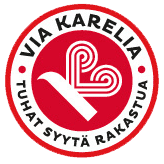Intangible Cultural Singing Heritage Route
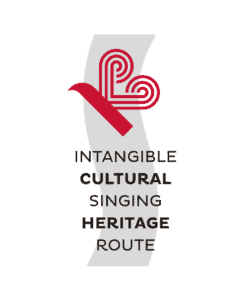
Intangible Cultural Singing Heritage Route -project
The goal of this project is to prepare an application to Council of Europe to get a new cultural route as a official member of Cultural routes.
The main theme of this new route is intangible cultural heritage, especially singing heritages of the area.
The route connects many culturally indispensable singing traditions in the Finnic and Baltic areas, such as the runosong tradition of Finland, Ingria, Karelia and Estonia, Seto leelo singing tradition in Estonia and sutartinės in Lithuania.
The Baltic song and dance celebrations (Estonia, Latvia and Lithuania) are also essential to the theme of the route, reflecting the European values, respect for human dignity and right, democracy and equality.
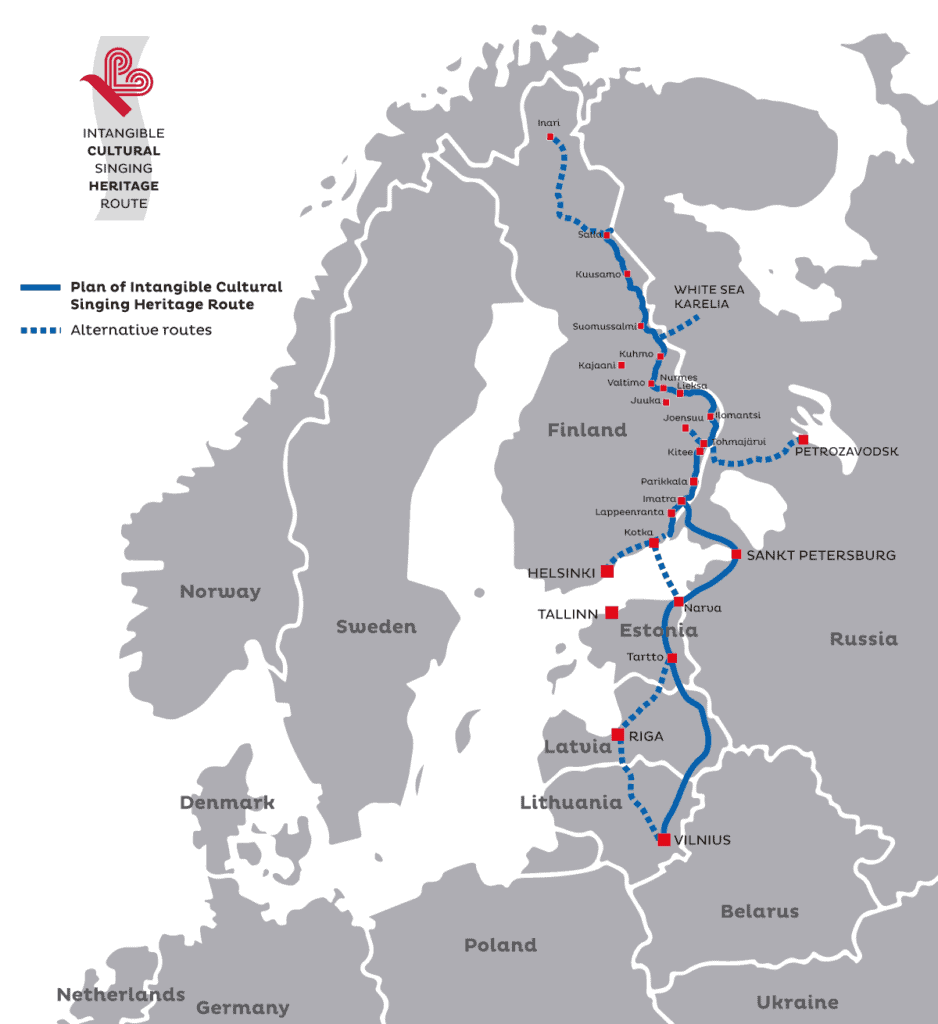
Runosong Tradition
Runosong tradition has been crucial to Finnish and Karelian cultures.
For at least two thousand years this cultural medium has preserved and renewed culture as well as language, and it has been passed from generation to generation, even to the present time.
For instance, the world-famous Kalevala Epos is a compilation of runosong poems from Finland, Karelia and Ingria.
The runosong tradition is common also to Estonian culture.
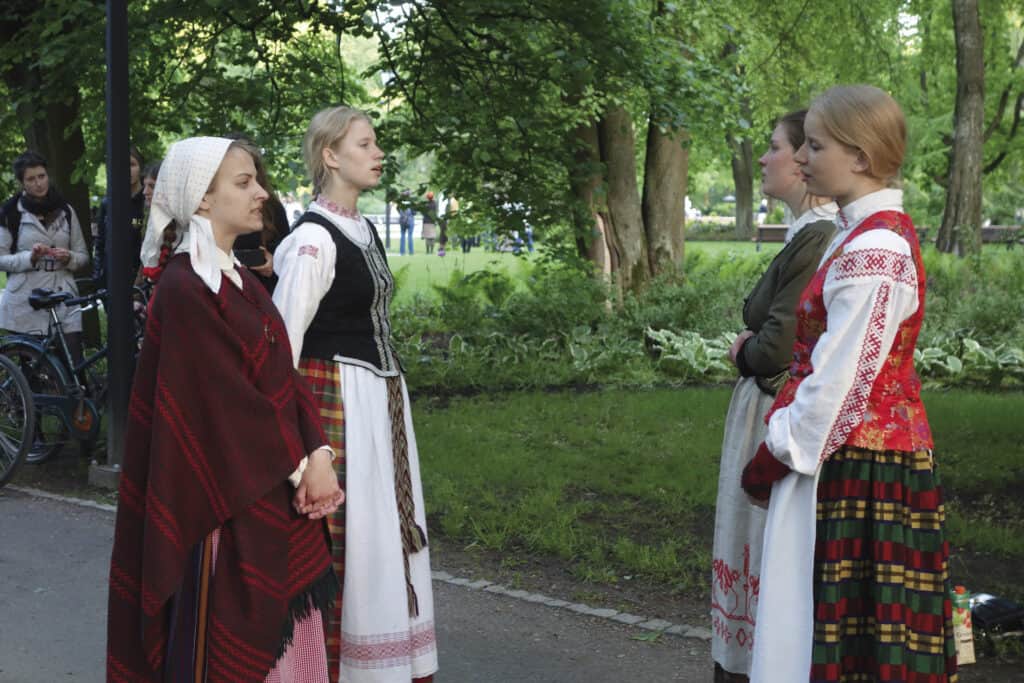
Leelo
Leelo, a Seto polyphonic style of folk singing, is practised in Eastern Estonia,
and can be found on the UNESCO list of intangible culture. It is believed to be at least a thousand years old, and it is central to the identity of Seto culture. The Setos still sing their songs today and consider their singing traditions important. Both in the Seto region and more widely in the Baltic area, new women’s and men’s choirs have recently been formed.
Sutartinės
Sutartinės is a form of polyphonic music performed by female singers in North East Lithuania. It is included on the UNESCO list of intangible cultural heritage. Sutartinės are performed in solemn occasions, but also at festivals, concerts and social gatherings. The performances promote sharing of cultural values and provide a feeling of cultural identity, continuity and self-esteem.
Cultural Routes
The Cultural Routes of the Council of Europe are a practical way to promote human rights, de- mocracy, equality and the rule of law, the fundamental values of the Council of Europe, through cultural cooperation.
The Cultural Routes Programme was launched in 1987. In 2013, the Committee of Ministers adopted a resolution confirming the establishment of the EPA.

Finland has joined the Enlarged Partial Agreement on Cultural Routes of the Council of Europe (EPA) as of 1 January 2018.
The EPA cooperation and Cultural Routes projects
• promote territorial cohesion
• enhance diversity and understanding between majority and minority
• contribute to local economies by building expertise, cooperation and providing opportunities
• help to develop cultural activities and tourism in less well-known sites and remote areas and make them better known
• facilitate cultural exchange and education, participation of young people and research cooperation
• offer new opportunities to improve international networking and cross-border cooperation between actors in the field of culture, cultural heritage and cultural tourism
• provide an impetus for cooperation between the actors, and encourage them to improve their practices and adopt new operating models
• encourage innovative approaches to develop participatory activities and cultural tourism
• increase theme-based tourism offerings with cultural content
• create support structures for continuous quality improvements in sustainable tourism
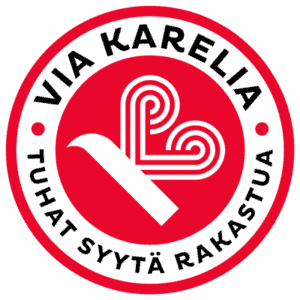
Next Steps
• Development of the network: Estonia, Latvia, Lithuania, Russia: organisations, museums, enterprises etc.
• Field work, meetings, decisions, etc.
• Administration
• Final agreements with all partners
• Implementation in 2022
Possible partners and stakeholders in Finland
Ministery of Education and Culture
Business Finland / Visit Finland
Regional Development
• Regional Council of South Karelia
• Regional Council of North Karelia
• Regional Council of Kainuu
• Nordic Business Center Naturpolis
Science and Research
East Finland University
Karelia university of applied sciencies
Sibelius Academy
Tourism
Tourist organisations
• Go Saimaa
• Visit Karelia
• Ilomantsi Tourist Association/ Visit Ilomantsi
• Wild Taiga
• Visit Suomussalmi
• Ruka-Kuusamo
• Salla
Projects:
• Greenbelt of Fennoscandia, Fennoskandian vihreä vyöhyke – Karjalan työvaliokunta
• Etelä-Karjalan Virkistysreittisäätiö / Suvorov-project
• Pro Agria Eastern Finland/Kulku -project
• Karelia university of applied sciencies
Associations and SME
Culture and creative field
Museums and cultural stakeholders
Juminkeko
North Karelian museum, Hilma
Youth activities
Hyvärilä – Youth and Holiday Centre
Oivanki Outdoor Education Centre
Contacts:
Project manager Pekka Huttu-Hiltunen pekka.huttu-hiltunen@runolaulu.fi
tel: +358 (0)40 179 8600
Communication coordinator Maria Iltola
maria.iltola@runolaulu.fi
puh: +358 (0)400 808 744
Project coordinator Soila Palviainen soila.palviainen@runolaulu.fi
tel: +358 (0)45 129 0199

